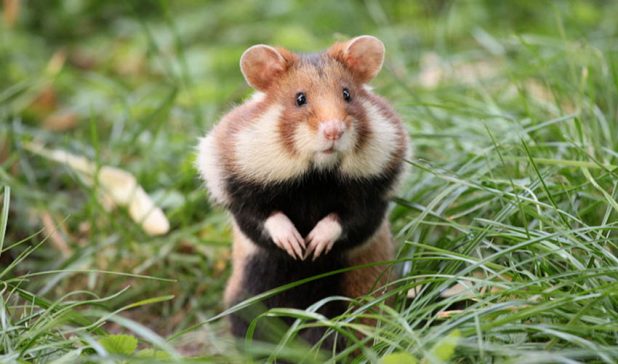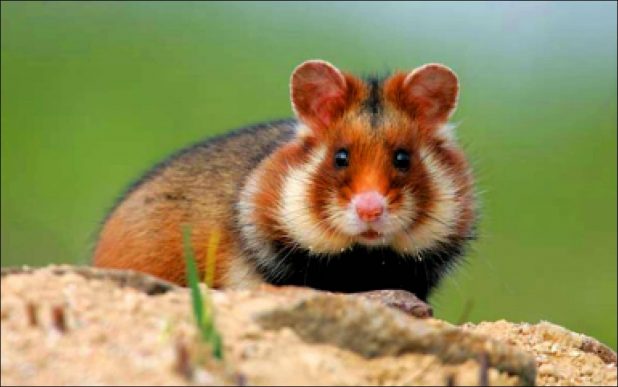Cute and beloved pets – hamsters – are of genuine interest to the owners. A tiny fluffy creature is quite active, they tirelessly explore the territory and stock up on “food” for all occasions. You can meet a hamster not only in houses and apartments, but also in nature. A cute pet, getting into an aggressive habitat, can demonstrate its teeth, which you can’t tell in appearance. Are there many unknowns still concealed by a fluffy hard worker?
1. Translated from the Avestan language, the word “hamster” means “an enemy that plunges to the ground.” The name is justified by the fact that in nature the animals bend the plant to the ground in an attempt to get to the seeds.
2. You can meet a hamster not only on the plain, but also in the mountains. Animals live even at an altitude of 3.5 thousand meters above sea level.
3. Hamster burrows are never difficult. They have a simple network of corridors and a couple of exits.
4. Depending on the species, hamsters reach a length of 5–35 cm! The largest species is the European hamster.
5. Two species were on the verge of extinction at once – Newton’s hamsters and Syrian. Representatives of these species are listed in the Red Book.
6. Hamsters are excellent swimmers. They use their own cheeks as a float by simply taking in air.
7. Hamsters that live in the natural environment can be carriers of dangerous diseases. This fact was taken into account by the Vietnamese government. It is forbidden to keep pets here. Violators are fined!
8. A hamster, unlike a rat, is not a social animal. Prefers solitude.
9. The hamster is able to collect and stock up to 90 kg of food and seeds. Only squirrels are harvested more.
10. Hamsters are nocturnal animals. They prefer to dig minks and burrow just after dark. This should be taken into account.
11. Hamsters gather food by their cheeks to take it to the colony and eat it there.
12. Animals eat not only dried fruits and vegetables, grains and seeds. They are omnivores, and therefore do not refuse meat, protein foods.
13. Dwarf hamsters may well live to an advanced age – up to 4 years old!
14. Hamsters are able to delay the birth of cubs if at this moment they are busy feeding the previous brood.
15. Males do not take any part in raising cubs. The female takes care of all the offspring.
16. The duration of pregnancy reaches 2-3 weeks.
17. The smallest representatives of the genus do not exceed 10 grams, the largest ones reach 400 g.
18. The widespread myth about the good nature of animals is erroneous. Hamsters are quite aggressive, especially in their natural environment.
19. Animals do not distinguish colors at all, they have poor eyesight. This is compensated by excellent hearing and sense of smell.
20. Each year of a hamster’s life equates to 25 years of human life.

21. A golden hamster lives in the homes of most of the inhabitants of the planet. Almost all domesticated pets descended from the genus of a female who gave birth to 12 cubs in 1930.
22. The maximum number of cubs in a litter is 20.
23. On a walk, the hamster leaves odorous liquid traces. The fluid is produced by special glands. By smell, the animal finds its way home.
24. Hamsters are smart. Animals remember their owners, nickname, they can perform several tricks after training.
25. During the night in the wheel, the animal overcomes a distance of 10 km!
26. Animals are born already with teeth that continue to grow all the time. The animal grinds them down
27. In the United States live hamsters that drag shimmering objects from the forest into their burrows. If the animal takes the item, it leaves a small pebble or stick in return.
28. Medicines are created from the animal’s ovary cells. Biological material is used to create drugs for lymphocytic leukemia, sclerosis, and other serious diseases.
29. In the wild, hamsters wash themselves with sand.
30. A domestic hamster bites in exceptional stressful situations.
